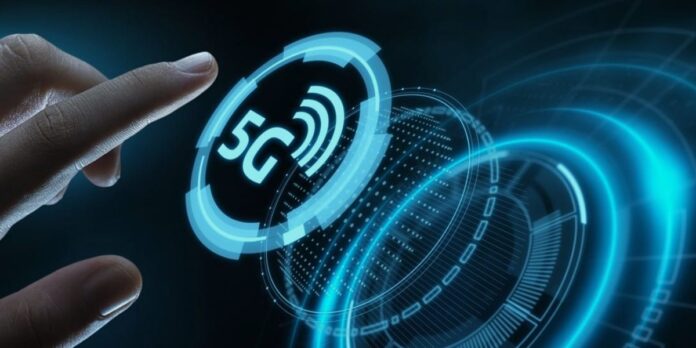The advent of 5G technology marks a transformative leap in the world of telecommunications, promising to revolutionize industries, economies, and daily life. With its unprecedented speed, ultra-low latency, and massive connectivity capabilities, 5G is more than just an upgrade from 4G; it is a foundational technology that will power the next wave of innovation across multiple sectors. In this article, we will explore the multifaceted impact of 5G technology on various aspects of society, including its implications for communication, healthcare, transportation, smart cities, and industry.
Revolutionizing Connectivity
At the core of 5G technology is its ability to dramatically increase data transfer speeds and reduce latency. With peak speeds expected to reach up to 10 Gbps, 5G is about 100 times faster than 4G. This enhanced speed allows for the seamless streaming of high-definition videos, faster downloads, and smoother online gaming experiences. But perhaps more importantly, 5G’s low latency, which can be as little as 1 millisecond, enables real-time communication and interaction, which is crucial for applications like autonomous vehicles and remote surgeries.
The improved connectivity of 5G is not just about faster internet for individual users. It also supports a much higher density of devices, up to 1 million per square kilometer, compared to around 100,000 for 4G. This capability is essential for the burgeoning Internet of Things (IoT), where billions of devices, from smart home appliances to industrial sensors, are connected to the internet and each other. With 5G, these devices can communicate more efficiently, leading to smarter homes, cities, and industries.
Transforming Industries
5G technology is expected to have a transformative impact on a wide range of industries, enabling new business models and innovations.
Healthcare
One of the most significant impacts of 5G will be in the healthcare sector. The ultra-reliable low latency communication (URLLC) offered by 5G makes remote surgeries a reality. Surgeons can operate on patients from miles away using robotic arms controlled in real time. Additionally, 5G can support the transmission of large medical imaging files quickly, allowing for faster diagnosis and treatment. Wearable devices that monitor patient health in real time can provide continuous data to healthcare providers, enabling proactive care and reducing hospital visits.
Transportation
5G will also play a crucial role in the development of autonomous vehicles. These vehicles require real-time communication with each other, with infrastructure, and with cloud services to operate safely and efficiently. The low latency of 5G is vital for these interactions, as even a slight delay could have serious consequences. Furthermore, 5G can enable advanced traffic management systems that use real-time data to optimize traffic flow, reduce congestion, and lower emissions.
Manufacturing
In manufacturing, 5G can support the development of smart factories where machines, robots, and sensors are connected to optimize production processes. With 5G, manufacturers can implement predictive maintenance systems that monitor equipment health and predict failures before they happen, reducing downtime and saving costs. The high reliability and low latency of 5G also make it possible to use wireless communication for critical control processes. Which was previously only possible with wired connections.
Entertainment and Media
The media and entertainment industry will also see significant changes with the adoption of 5G. The increased bandwidth and low latency will enable new forms of content. Such as augmented reality (AR) and virtual reality (VR) experiences, to be delivered seamlessly. These technologies require high data rates and low latency to function effectively, and 5G provides the necessary infrastructure. Additionally, 5G will enable more immersive and interactive live events. Where fans can choose different camera angles or access real-time statistics, enhancing the viewing experience.
Retail
The retail sector will benefit from 5G through the enhancement of e-commerce and in-store experiences. With 5G, retailers can deploy AR applications that allow customers to virtually try on clothes or see how furniture would look in their homes before making a purchase. The technology can also improve inventory management by enabling real-time tracking of products throughout the supply chain. Furthermore, 5G can support the development of fully autonomous delivery systems. Such as drones or self-driving vehicles, to deliver goods faster and more efficiently.
Economic Impact
The economic impact of 5G is expected to be substantial. According to a report by IHS Markit, 5G is projected to enable $13.2 trillion in global economic output by 2035 and create 22 million jobs. The technology will not only drive growth in existing industries but also give rise to entirely new sectors. For example, the deployment of 5G will spur the development of new applications and services, such as smart cities, connected health, and advanced robotics, which will generate additional revenue streams.
Moreover, 5G will play a critical role in closing the digital divide by providing high-speed internet access to underserved and rural areas. This increased connectivity can boost economic opportunities in these regions by enabling remote work. Access to online education, and participation in the digital economy.
Challenges and Considerations
While the potential benefits of 5G are immense, the deployment of the technology also presents challenges. One of the primary concerns is the significant investment required to build the necessary infrastructure, including new base stations and fiber-optic networks. Additionally, there are concerns about the security of 5G networks. The increased connectivity and reliance on digital systems make them attractive targets for cyberattacks.
There are also debates about the potential health risks associated with 5G due to the higher frequency radio waves it uses. Although the scientific consensus is that 5G is safe, ongoing research and transparent communication are essential to address public concerns.




